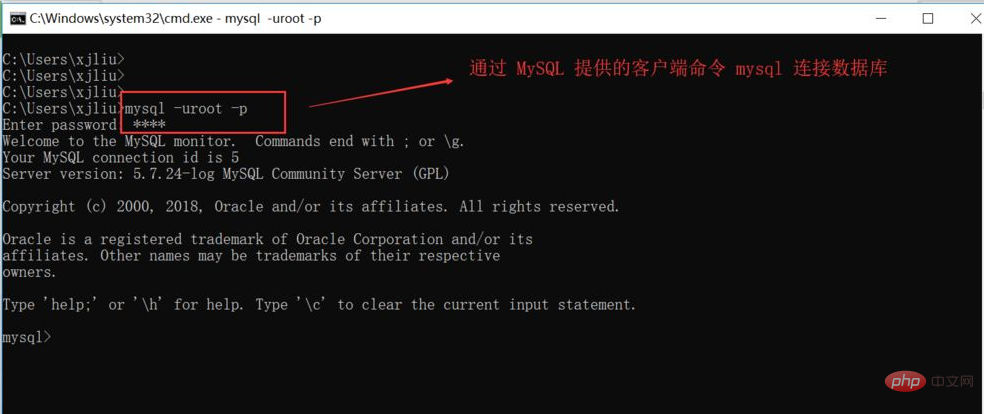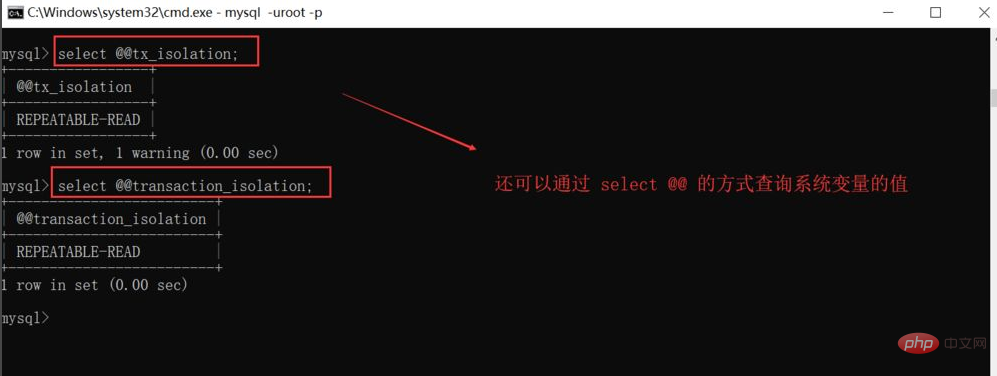Home >Database >Mysql Tutorial >How to query the transaction isolation level in mysql
Mysql method to query the transaction isolation level: 1. Start the command line window and connect to the MySQL database; 2. Execute the "show variables like 'tx_isolation';" or "SELECT @@tx_isolation;" command in the command window You can check it.

The operating environment of this tutorial: windows7 system, mysql8 version, Dell G3 computer.
SQL standard supports 4 transaction isolation levels, READ_UNCOMMITTED (read uncommitted), READ_COMMITTED (read committed), REPEATABLE_READ (repeatable read), SERIALIZABLE (serial read), MySQL innodb engine supports all of these There are 4 types of transaction isolation levels. This article will share how to check the transaction isolation level in MySQL.
Mysql steps to query transaction isolation level
1. Start the command line window and connect to the MySQL database
Illustration, connect to the MySQL database through the client command mysql provided by MySQL.

#2. Query the current transaction isolation level of the database through system variables
Illustration, query the system variables provided by the database ## The current transaction isolation level can be obtained by using the value of #tx_isolation or transaction_isolation.
show variables like 'tx_isolation'; show variables like 'transaction_isolation';
SELECT @@tx_isolation; SELECT @@transaction_isolation;

mysql video tutorial】
The above is the detailed content of How to query the transaction isolation level in mysql. For more information, please follow other related articles on the PHP Chinese website!